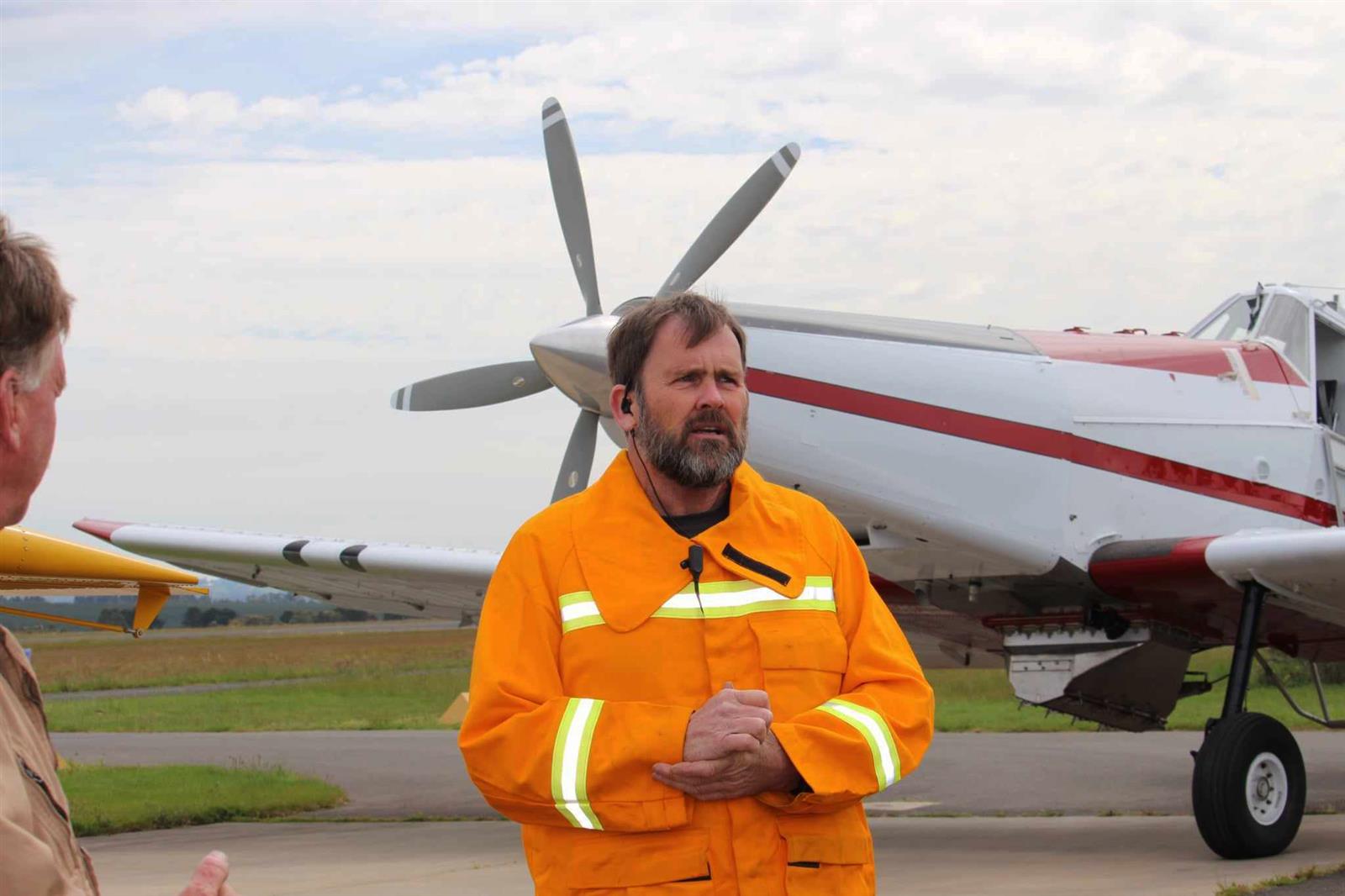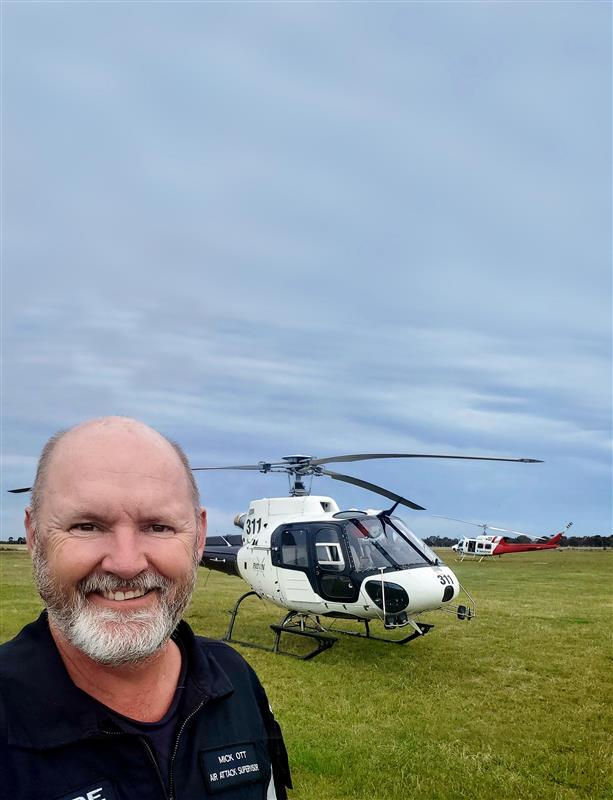 Fixed-wing bomber loader Graeme Briggs
Fixed-wing bomber loader Graeme Briggs
There are seven roles available to volunteers to support aviation response. We talked to two volunteers about their roles.
FIXED-WING BOMBER LOADER GRAEME BRIGGS
It’s not quite as fast paced as a Formula One pit stop, but it comes close. Graeme Briggs is one of CFA’s fixed-wing bomber loaders. His job is to go out onto the tarmac while the plane is still running and load it with either water, foam or retardant.
Graeme’s been doing the role for 15 years and said he still gets a kick out of it.
An average day at the airbase during a fire is from 8am to 10pm filling about 10 planes an hour.
“The biggest day was during the 2019-20 Gippsland fires where we did a total of 92 loads,” Graeme said.
“It can be fairly strenuous making sure everything is working correctly to make loading more efficient. You can be in a hot and noisy environment for a lot of the day.
“It’s a simple skill, but it’s a disciplined skill that you have to have to work within the boundary. Absolutely anyone who is an operational CFA member can do this role.
“The aircraft are based at Hamilton, Stawell, Bairnsdale – numerous places across the state depending on where they land.
“I have always had a little bit of interest in aircraft. It certainly gets into your blood and under your skin when you start working in the industry.”
One of the perks of the job is to occasionally go up in a plane, but when asked if he could land a plane if directed Graeme said, “no – it’s very complicated”.
Graeme started working in the State Aviation Unit in the State Control Centre in 2007.
Based in Balnarring with a mechanical background, Graeme has made it a family affair, with his wife and son also having had training as fixed wing bomber loaders.
“When my wife and I go traveling, we ask one another what type of aircraft that is and where it might be going.”
AIR ATTACK SUPERVISOR MICK OTT
Mick, a Beaconsfield Fire Brigade firefighter, began his role as an air attack supervisor in the 2022-23 fire season after being an air observer for six years.
“I’ve been a CFA member for almost 35 years and have gained a lot of experience,” Mick said. “I’ve always been interested in aviation and I put my hand up when the opportunity to be an air observer came up. I then stepped up to the air attack role as it’s good to learn new skills and put my experience to good use.”
As an air attack supervisor (AAS) Mick coordinates the firebombing aircraft from a fixed wing aircraft or helicopter.
“The role of the AAS is to communicate with the incident controller to ensure the firebombing aircraft are working to their plan while maintaining the safety of the aircraft and crews on the ground.
"There are a lot of safety considerations while coordinating aircraft in the air. We need to make sure the aircraft work in a way to avoid risk of a collision. My role is like an airborne air traffic controller and strike team leader rolled into one.”
This sounds like a very stressful job, but Mick takes it in his stride.
"It’s mentally and physically demanding, but that’s what I enjoy about it. I might feel nervous in the beginning – there are a lot of people relying on me – but once I’m doing the job I just get on with it.”
Mick normally operates out of Moorabbin Airport and during the fire season AASs are on a four-day roster.
"When I’m rostered on, I’m on standby at the airport waiting for a pre-determined dispatch (PDD) call. We cover Districts 8, 13 and 14 but can also be dispatched across the state. Thanks to PDD we can be above a fire quickly. When a brigade is paged to a fire, we get paged at the same time and we’re airborne in 10 minutes.
“This role has given me a new focus in CFA. It came at a really good time for me after being on the ground for 35 years.”
 Air attack supervisor Mick Ott
Air attack supervisor Mick Ott-
-
-
-
| Submitted by |
News and Media |